Microgrid Planned Islanding from Main Grid
This example shows how you can execute a microgrid planned islanding from the main grid by using a battery energy storage system (BESS). The model in this example comprises a medium voltage (MV) microgrid model with a BESS, a photovoltaic solar park (PV), and loads. The microgrid can operate both autonomously (islanded) or in synchronization with the main grid. In this example, the microgrid initially is in grid-connected mode. The planned islanding function controls the point of common coupling (PCC) power flow to zero. Finally, the breaker opens to disconnect the microgrid from the main grid. After the islanding, the battery system performs a power dispatch, and the loads are changed.
The model includes a microgrid controller with all the necessary functions for the planned islanding. The planned islanding operation follows the IEEE Std 2030.7 standard.
Model Overview
The Substation connects the BESS and the feeder to the main grid. To connect the main grid to the BESS and the outgoing feeder, this subsystem comprises a connecting breaker, a disconnector, and a transformer. The substation also contains the BESS controller.

Components in Microgrid Planned Islanding from Main Grid
The system comprises five main components:
Substation
Subsystem that connects the microgrid to the main grid. It has a connecting breaker, disconnector, and transformer to connect the main grid to the microgrid. The substation also contains the microgrid controller and the BESS.
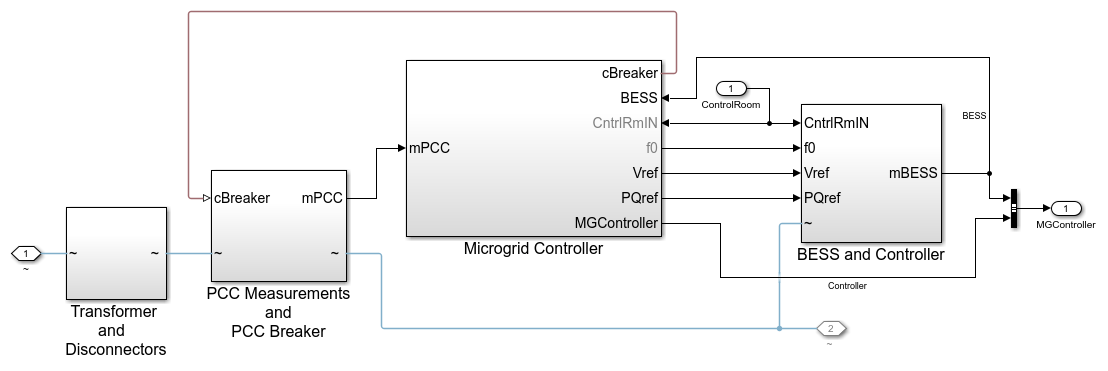
Microgrid Controller
The microgrid controller receives commands and setpoints from the Operator Control Room subsystem, as well as measurements and status from other sources and loads in the microgrid. The microgrid controller has different microgrid functions. In this example, the microgrid controller comprises:
PLL measurements from grid side and microgrid side
Reference frequency generation for the microgrid
Reference voltage generation for the microgrid
Planned islanding function to achieve zero power flow at point of common coupling (PCC)
Activate main breaker control command
Receive setpoint and command from operator and communicate to the microgrid asset
For planned islanding, to achieve zero power flow at the PCC, the microgrid function calculates the active and reactive power reference for the BESS.
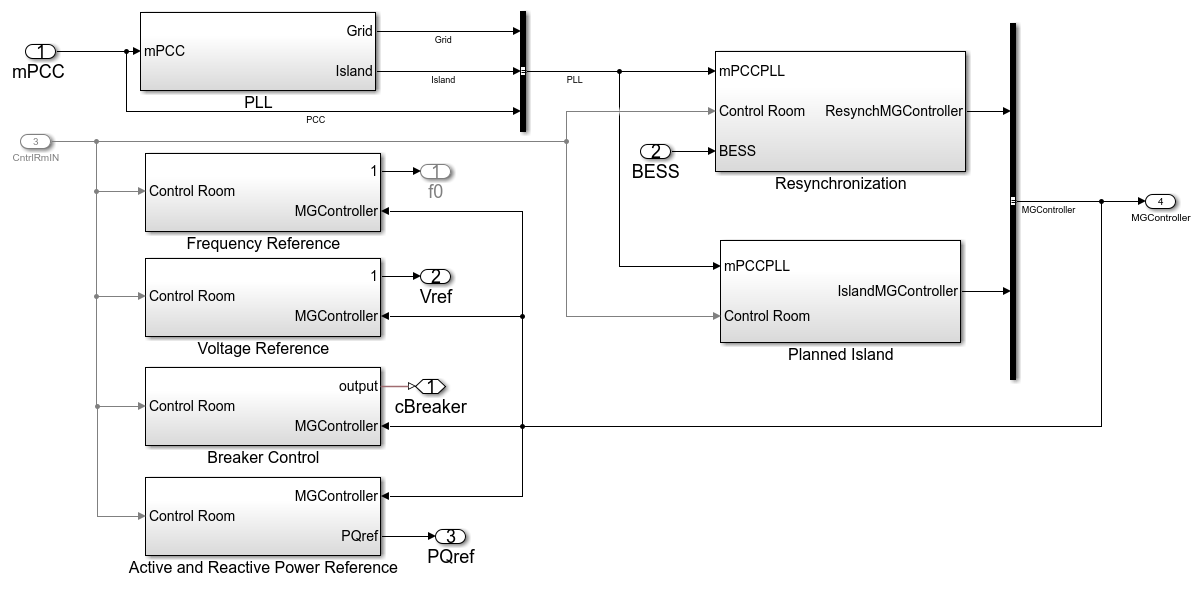
Microgrid Planned Islanding
In this function, the PCC power flow control logic is implemented.

BESS System
The BESS system connects at the PCC and is installed in the substation. The BESS controller controls the BESS to achieve the zero power flow at PCC for the planned islanding process. After the islanding, the Operator Control Room orders the BESS to perform a power dispatch with setpoints.
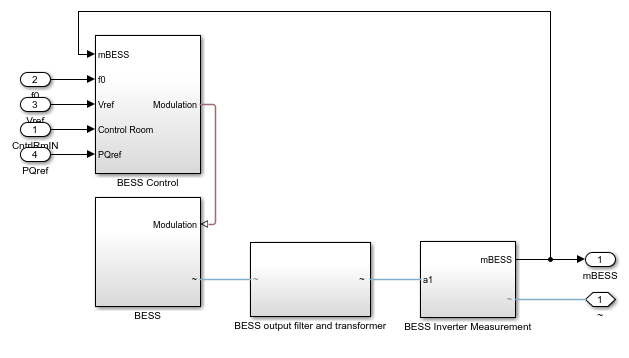
Operator Control Room
The operator control room sends all the setpoints and commands. It also plots the measured quantities and the system performance analysis.

Simulation Results
These plots show:
Voltage and current of BESS.
Synchronization of voltage, frequency, and phase angle.
Active and reactive power output of BESS, PV, load, and main grid.
Load voltage and load current.
This plot shows the three-phase voltage and current output of the BESS, as well as the grid current during planned islanding.
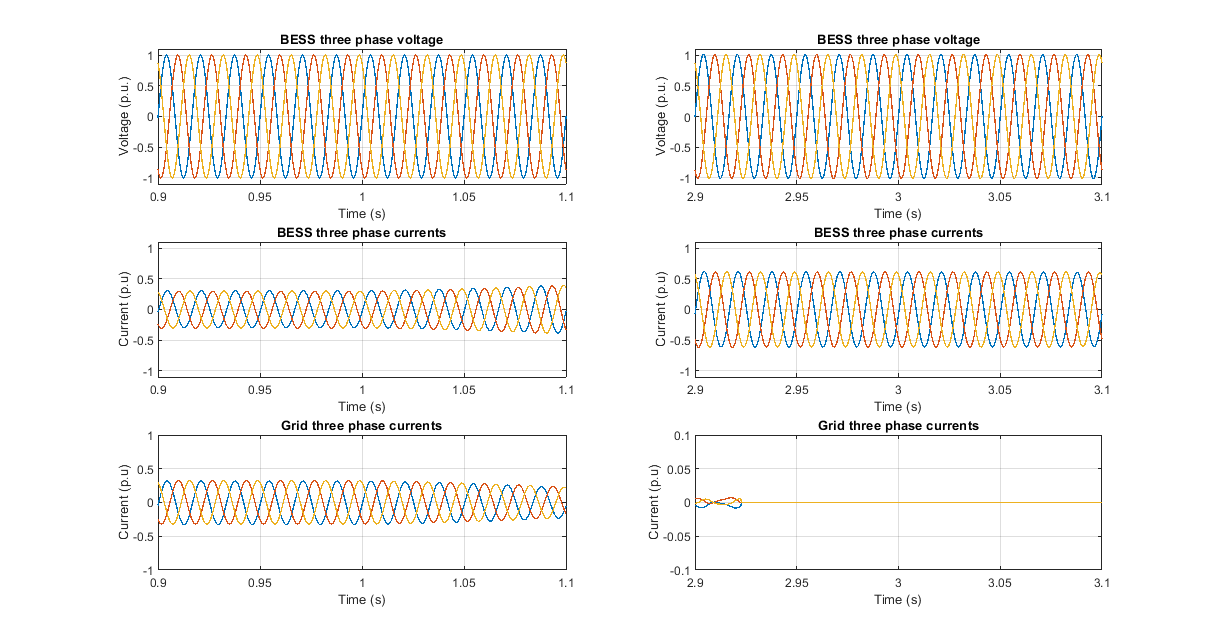
The plot shows the measured values around the islanding command at 1 s and the breaker closing at 2.9 s. A stable voltage and current output from BESS verifies a good planned islanding. The very small grid current value before the breaker opening shows a good planned islanding with almost zero power flow at PCC.
This plot shows the voltage and frequency of the microgrid as well as the main grid.
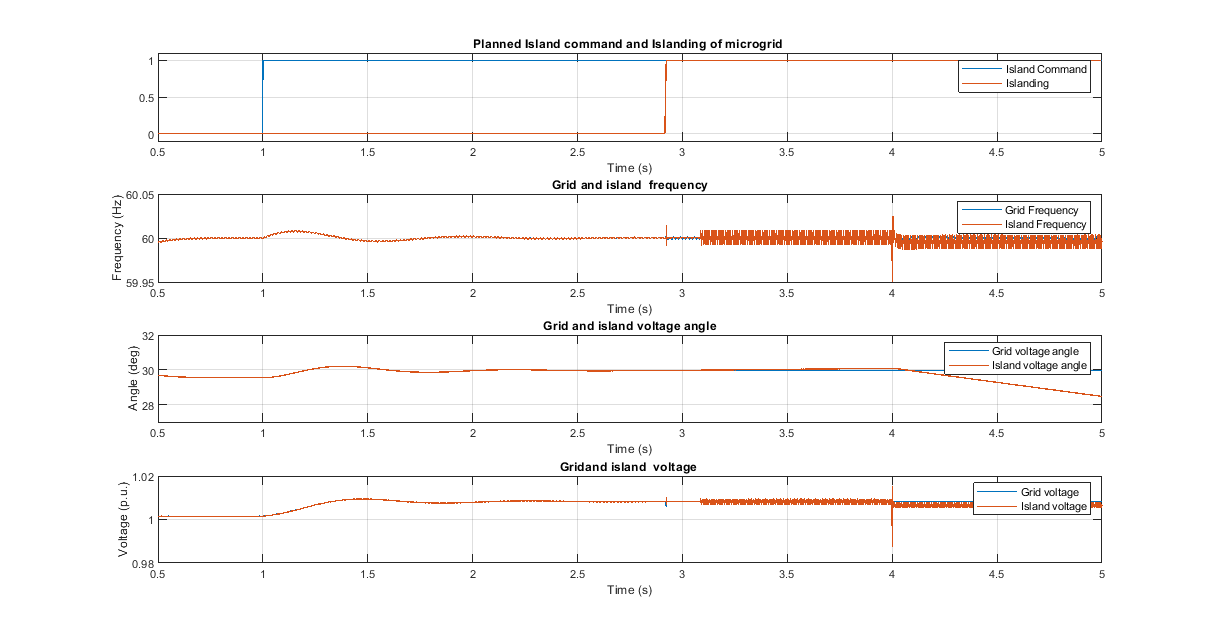
The stable voltage and the frequency ensure efficacy of the planned islanding function.
This plot shows the active and the reactive power of BESS, PV, main grid, and loads.
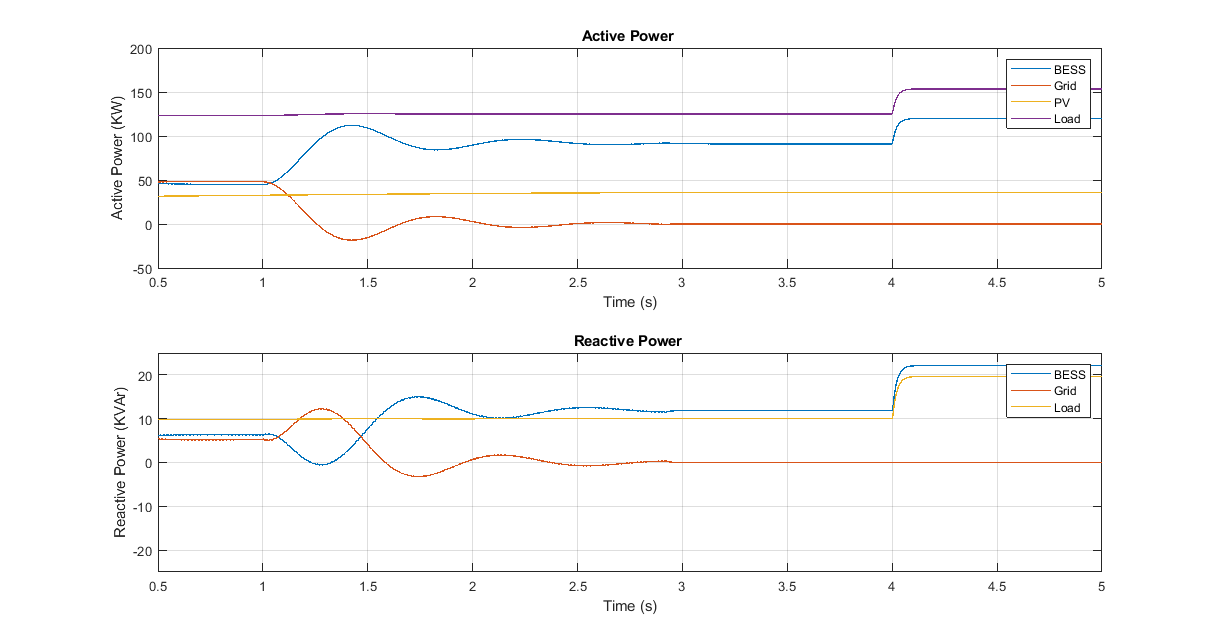
Stable power outputs confirm a stable planned island process. The uninterrupted load power verifies a smooth islanding of microgrid.
This plot shows the voltage and the current of the microgrid loads.
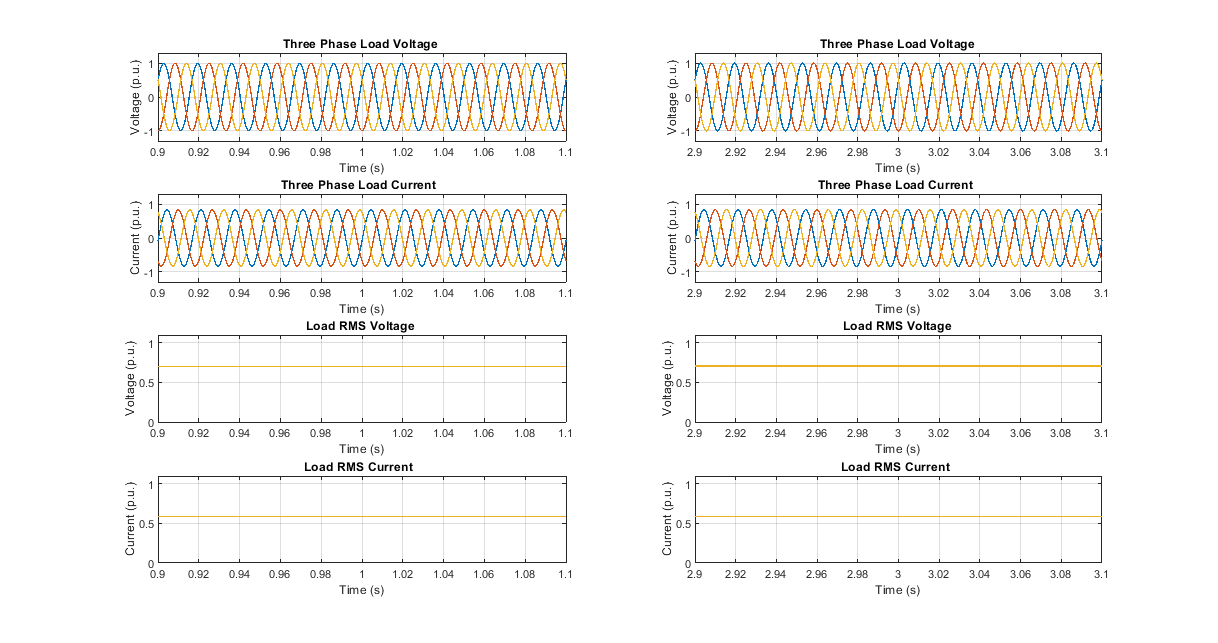
Uninterrupted stable voltage and current at microgrid loads verify effective islanding of microgrid. The plot shows the measured values around the islanding command at 1 s and when the breaker opens at 2.9 s.
System Performance
These plots show the results of the system performance and the impact of the planned islanding function. These performance indices include:
Maximum voltage, minimum voltage, and frequency measured at relevant grid location
IEEE 2030.7 mapping on planned island process
Improvement of key performance indices with planned island process
This plot shows the minimum and maximum values of voltage and frequency at different locations of the microgrid.
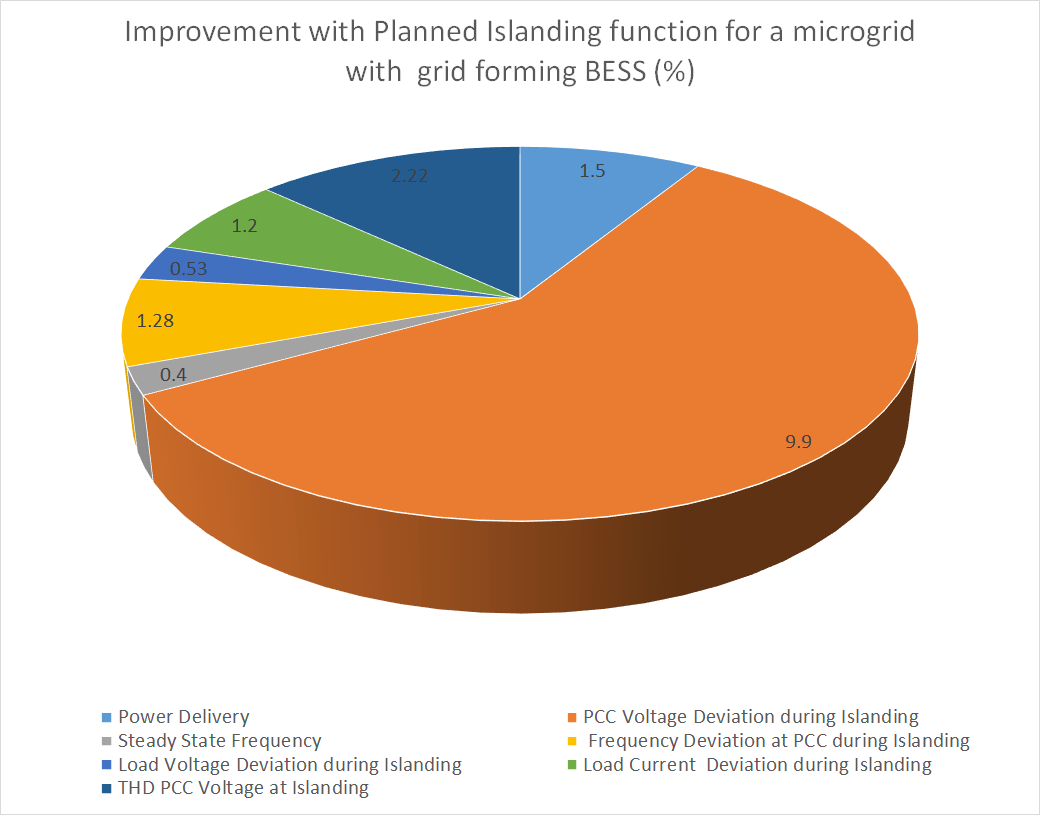
The resynchronization process maintains the deviations of the voltage and the frequency within acceptable limits.
This plot shows the improvement in key performance indices with the resynchronization process compared to grid connection without resynchronization function.

The stable voltage and frequency ensure efficacy of the planned islanding.
This plot shows the active and reactive power of BESS, PV, main grid, and loads.
This plot shows the IEEE 2030.7 mapping on planned island process.
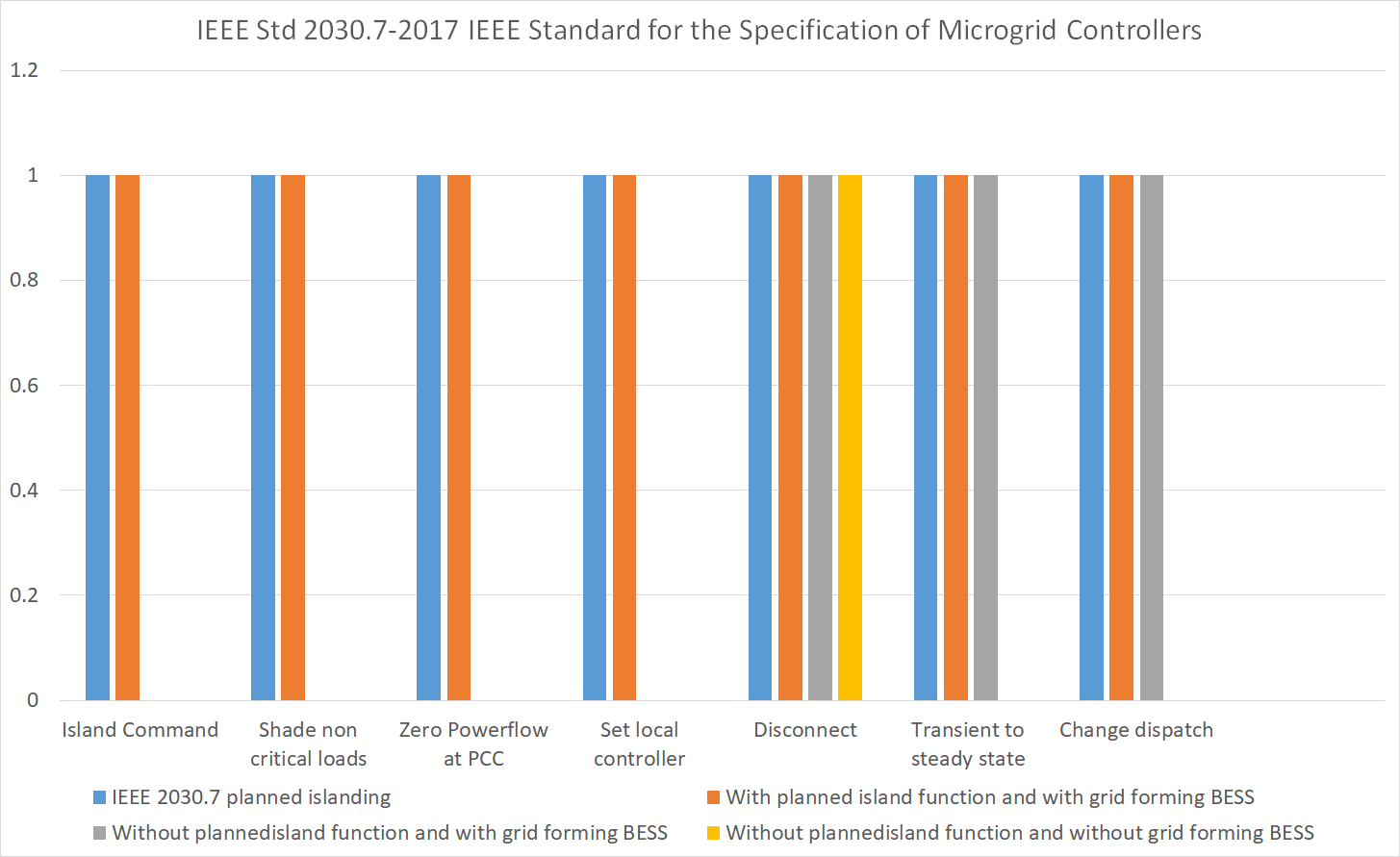
The planned island function executes all the steps from IEEE 2030.7. Grid islanding without planned island functions cannot follow the IEEE standard.